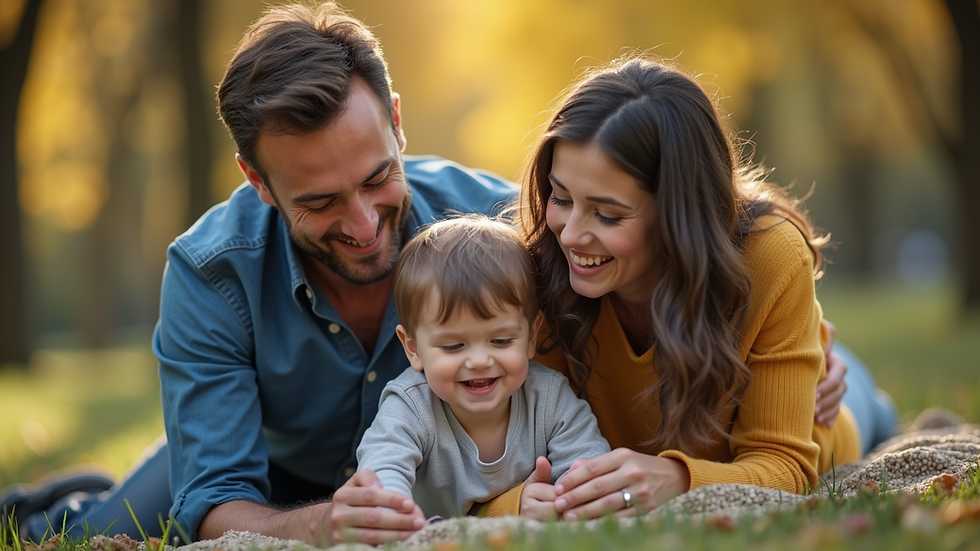How Attachment Styles Influence Emotional Connections
- Jul 29
- 3 min read
Attachment styles profoundly influence how we connect with others, shaping our relationships and emotional bonds. Understanding these styles is crucial for developing healthier connections both romantically and platonically. This exploration of attachment theories can lead to deeper emotional understanding and improved relationships.
What Are Attachment Styles?
Attachment styles are patterns of emotional and relational behavior exhibited in relationships. These styles are typically categorized into four main types:
Secure Attachment: Individuals with this style feel comfortable with intimacy and independence. They are able to communicate their needs and seek support when necessary.
Anxious Attachment: Those with an anxious attachment style often crave closeness but may fear abandonment. They may become overly preoccupied with their relationships and seek constant reassurance.
Avoidant Attachment: Individuals with avoidant attachment value their independence and often distance themselves emotionally from others. They may struggle with intimacy and have difficulty expressing feelings.
Disorganized Attachment: This style is marked by a lack of clear attachment behaviors. Individuals may exhibit a mix of anxious and avoidant tendencies, often stemming from past trauma or unresolved issues.
Understanding these styles helps individuals recognize their own patterns and those of their partners, fostering stronger connections.

How Attachment Styles Develop
Attachment styles primarily develop during childhood through interactions with caregivers. Secure attachments generally form when caregivers provide consistent support and nurturing. Conversely, inconsistent responses or neglect from caregivers can lead to anxious or avoidant styles.
Research indicates that approximately 60% of individuals develop a secure attachment style, while around 20% exhibit avoidant attachments and another 20% have anxious attachments. These early experiences create a blueprint for how individuals approach relationships throughout their lives.
To illustrate, children who grow up with attentive and responsive caregivers are more likely to feel secure in relationships as adults. On the other hand, those who encounter inconsistent care may struggle to trust partners, leading to anxiety or an avoidance of closeness.

The Impact of Attachment Styles on Romantic Relationships
Attachment styles play a significant role in shaping romantic relationships. Individuals often unconsciously seek partners who match their attachment styles, leading to cycles of attraction and conflict.
For example, a person with an anxious attachment style may be drawn to someone with an avoidant style. While the anxious individual seeks closeness and reassurance, the avoidant partner may feel overwhelmed and retreat emotionally. This dynamic can create tension and lead to misunderstandings.
Statistics reveal that approximately 40% of couples experience ongoing conflict based on mismatched attachment styles. Engaging in open communication is essential for these couples. By articulating their emotional needs, partners can work to bridge the gaps created by their differing attachment styles.
To foster healthier connections, both partners should strive to understand their own attachment styles and how they affect their interactions. Engaging in activities like couple's therapy has shown to improve awareness and empathy in relationships.

Building Healthy Relationships with Secure Attachment
Understanding your attachment style can facilitate personal growth and help you build more robust emotional connections. Empathy and communication are key in adopting healthy relationship behaviors.
Practice Open Communication: Share your emotional needs clearly with your partner. For instance, if you have an anxious attachment style, expressing your need for reassurance can prevent misunderstandings.
Seek Feedback: Regularly check in with your partner to gauge their emotional state and needs. This feedback loop can enhance mutual understanding and strengthen emotional bonds.
Develop Self-Awareness: Reflect on your attachment style and how it shapes your interactions. Understanding triggers can help you manage your emotional responses more effectively.
Cultivate Dependency: While balance is important, fostering a degree of dependency can aid in emotional connections. Allow yourself and your partner to rely on each other for support, ensuring a secure learning environment.
Engage in Therapy: Individual or couples therapy can provide insights into attachment issues and facilitate healthier relationship dynamics. Professional guidance can lead to personal growth and improved connection.
By focusing on these strategies, individuals can develop healthier relationship patterns that promote understanding and connection.
Final Thoughts on Attachment Styles
Understanding attachment styles is essential for anyone looking to improve their emotional connections. By recognizing and addressing your attachment style, you empower yourself to foster authentic, healthy relationships.
Striving for secure attachments may be a journey, but the outcome is rewarding. Embracing open communication, seeking feedback, and being aware of your emotional triggers can significantly enhance your connections with others.
If you're interested in further exploring how your attachment styles influence relationships, consider consulting resources on attachment styles in relationships. Gaining insights can pave the way for more fulfilling relationships and deeper emotional connections.
In your journey toward healthier relationships, remember that awareness is a crucial first step. You have the power to cultivate connections that are stable, secure, and deeply satisfying.




It's fascinating how often the subtle dynamics of our earliest relationships continue to shape our adult interactions, often without us even realizing it. This underlying influence can truly dictate how we connect, or struggle to connect, with others. Recognizing these patterns is the first critical step toward fostering healthier, more secure bonds. It moves us beyond simply reacting to situations and into a space of conscious choice and empathy. However, moving from general awareness to specific self-knowledge can sometimes feel abstract. Many people struggle to pinpoint the exact nature of these ingrained patterns in their own lives. For anyone looking to gain a deeper understanding of your attachment style, a dedicated assessment can be incredibly insightful for personal growth.